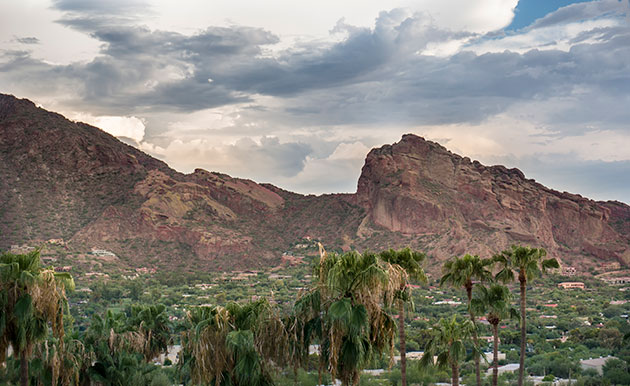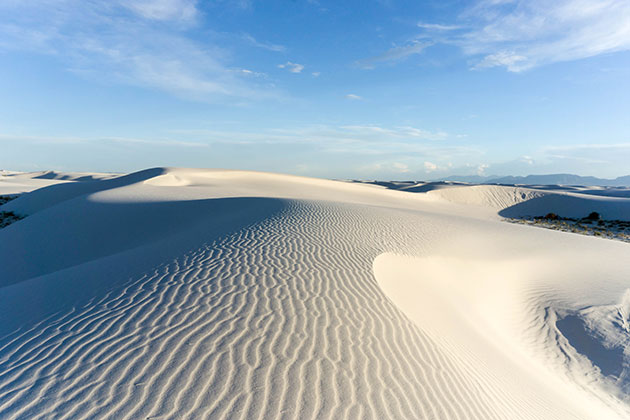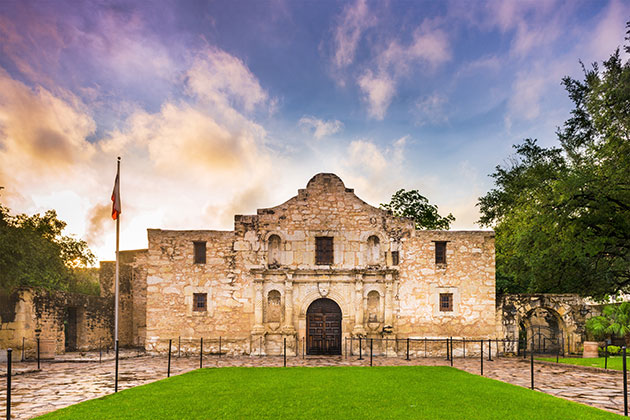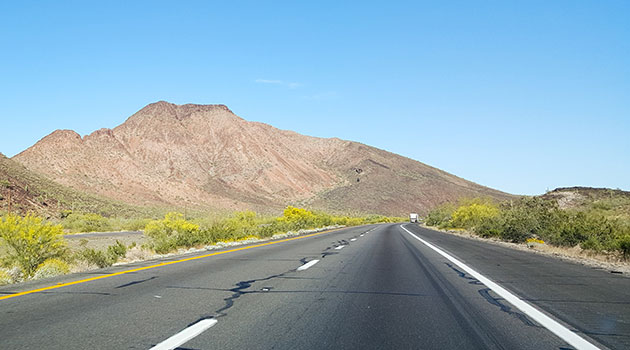Is there anything fall doesn’t do right?
On top of serving up the visual splendor of peak foliage and providing the perfect atmosphere to explore the darker side of things, the season includes the year’s best baseball. And 2017 has been particularly bountiful.
The World Series between the Houston Astros and Los Angeles Dodgers was one for the record books, with the back-and-forth battle spiking passions and spurring on late nights spent watching the best of the Big Show.
The thoroughfare connecting the two cities is equally thrilling, bookended by the Pacific Ocean and Gulf of Mexico and passing by miles of natural beauty, some major Southwestern hotspots, and plenty of unique roadside sites.
And even though the 1,553-mile route is packed with variety, it’s easy to follow. The entire trip can be done without getting off Interstate 10.
The 2017 World Series may have slid into home, but you can still score big any time with a line drive from Los Angeles to Houston.
Los Angeles, CA

Start your journey in the City of Angels—and don’t forget to see where they play. The Los Angeles area is close to Angel Stadium of Anaheim, where the region’s American League team takes the field. (Of course, Dodger Stadium, which just hosted the World Series, is actually in L.A.)
The ballparks won’t be too busy in the offseason, but that hardly matters in a metropolis like Los Angeles, where you can spend untold hours scoping out world-class beaches, visiting a plethora of well-curated museums, taking in movies in the shadow of the Hollywood sign, grabbing a meal at one of the area’s outstanding restaurants, shopping in flagship designer stores, looking for the Next Big Thing in entertainment, and generally soaking in all the glamour and California sunshine that makes the star-studded city sparkle so brightly.
But don’t get too swept up in the scene: there’s plenty more driving to be done. Find I-10 to start off toward your next destination.
Phoenix, AZ

Free Ebook: Road Trips of America
Come along for the ride as we guide you through some of the best road trips in the country. Whether you’re a history buff, cultural connoisseur, or nature lover, we’ve covered all the sights and attractions in each state you won’t want to miss.
Enter your email address for your free copy!Arizona’s state capital lies 373 miles east of L.A., but the unique desert vibe makes it feel like you’re worlds away.
Perhaps unsurprising in a city of perpetual sunshine, Phoenix has plenty of outdoor activities on offer, including expeditions to nearby Camelback Mountain and McDowell Mountain, as well as a number of more local trails perfect for biking and hiking. (Some can even be used to peer into the past, thanks to their litany of ancient petroglyphs.)
If the place gets too hot, you can take refuge indoors at a number of museums, spas, and casinos in town—or get your feet wet by paddleboarding the Salt River.
And the city is also home to Chase Field, where fans of the Arizona Diamondbacks can root for the home team while cooling off in the stadium’s famous outfield pool.
Las Cruces, NM

You won’t pass through much of New Mexico on this trip, but Las Cruces is a great place to stop in the Land of Enchantment.
Located 388 miles east of Phoenix, this small desert town is big on unique sites, including the dwarfing dunes of gypsum known as White Sands National Monument, where you can wander for miles through unperturbed natural splendor.
Dripping Springs Natural Area is another nearby geological wonder, where all manner of hiking and biking is available to view the Organ Mountains (named after their resemblance to the steep, stacked cylinders of a pipe organ). At an altitude of 9,000 feet, the landscape offers a variety of interesting formations, from peaks, canyons, and cliffs to the area’s famous “weeping walls.”
The town itself also has plenty to do, with a plethora of museums, craft stores, and restaurants to visit, as well as the Old Mesilla Village, where visitors can catch a glimpse of what life was like in Las Cruces in the 1840s.
San Antonio, TX

At 597 miles, the eastward stretch from Las Cruces to San Antonio is long—but worth it.
The Texas town is well known for its beautiful River Walk, where you can hit a triple by taking in the museum circuit, the downtown path, or the historic mission trail. (If you’re feeling especially ambitious, you can swing for all three.) River taxis are also available for those who’d rather float by the sites.
The city is also home to Natural Bridge Caverns, where visitors can explore the caves that shelter San Antonio’s underground water sources, or if you’d prefer to stay in the daylight, you can stroll through one of the area’s numerous natural parks, gardens, and historical districts, as well as the city’s zoo and expansive theme park.
And of course, you must remember the Alamo. San Antonio is home to the site, where the legendary battle cry was coined during a battle between settlers and the Mexican Army during the Texas Revolution in 1836.
Houston, TX

After one more eastward leg, clocking in at 197 miles, you’ll finally round the bases and arrive in Houston.
Minute Maid Park, where the 2017 World Series Champion Astros play, is a must-see, whether or not baseball is in season. But the town is home to several other out-of-this-world sites, like the Johnson Space Center, where a number of famous space missions— including the Apollo project—were commanded.
The Texas metropolis is also the location of beautiful Rice University, and features a wide variety of parks, plus a zoo, and aquarium. Within its city borders lie several other designated tourist areas, including a Museum District, a Theater District (home of the Houston Grand Opera), and a Historic District, where one can spy, among other old sites, Houston’s own “Plymouth Rock.”
And if all that driving has made you edgy, don’t worry: the city is a just a hop, skip, and jump away from the Gulf of Mexico, where the slow pace and sunshine makes it feel like perpetual summer. You might even swear it’s still baseball season.
Bonus Stops
The journey is a long one, but not short on interesting sights. If you’re in the mood to take in more wonders along the way, there are lots of top-notch options for side trips.
Joshua Tree, CA
About 130 miles east of Los Angeles is Joshua Tree National Park, a beautiful and blessedly preserved example of pristine desert, full of some of the rarest plant life in the world, as well as plenty of opportunities for camping, hiking, biking, and other outdoor activities.
If that type of fun isn’t your style, you can stay at nearby Palm Springs, where the desert takes on a much more luxurious feel thanks to the town’s plethora of resorts, restaurants, and spas.
City of Rocks State Park, NM
Just shy of 90 miles south of Las Cruces, this “city” may move a lot slower than most. The natural preserve is named after the fascinating volcanic rock formations it’s comprised of, and features a desert botanical garden among its expansive grounds.
The park also offers the chance to camp overnight, bike, hike, and take in spectacular views of wildlife, birds, and stars.
Balmorhea State Park, TX
Sitting right off I-10, about 230 miles east of Las Cruces, is one of the best chances you’ll have to visit an actual desert oasis.
Balmorhea State Park was built by the Civilian Conservation Corps in the 1930s, with a majority of the work centered on creating trails and campsites for patrons to use. And it continues to pay off: more than 80 years later, visitors can still take in the splendor of the natural aquifer, through which more than 15 million gallons of cool mountain water flow, attracting some of the most unique plants and wildlife to be found in the otherwise arid surroundings.
